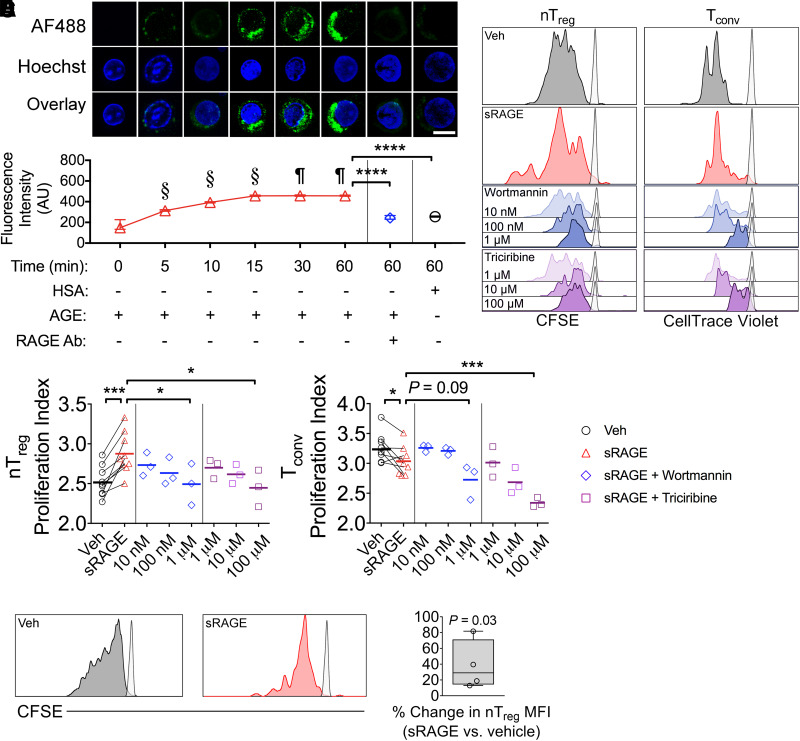Figure 5.
Human nTregs bind AGEs in a RAGE-dependent manner and proliferate more in coculture when treated with sRAGE. A: Human CD3+CD4+CD25+CD127lo/− nTregs were incubated with AGE-modified HSA (AGE-HSA or AGE) or unmodified HSA (HSA)—both labelled with Alexa Fluor 488 (AF488). Anti-RAGE antibody (Ab) was added to the culture as indicated. Bar, 10 µm. n = 3 donors/group. B–D: CFSE-labeled CD3+CD4+CD25+CD127lo/− nTregs and CellTrace Violet–labeled CD3+CD4+CD25− Tconvs were stimulated in 3-day coculture at a 1:1 ratio containing anti-CD3/CD28 MACSiBeads (1:10 bead:cell ratio). B: Representative histograms (unstimulated controls presented as semi-transparent peaks). C–D: Proliferation indices of nTregs and Tconvs when administered vehicle or 50 µg sRAGE daily (n = 9/group), as well as sRAGE in addition to PI3K-Akt-mTOR pathway inhibitor wortmannin or triciribine (n = 3/group). E and F: CFSE-labeled CD3+CD4+CD25+CD127lo/− nTregs were stimulated in 3-day monoculture containing anti-CD3/CD28 MACSiBeads (1:20 bead:cell) and 200 IU/mL IL-2. E: Representative histograms. F: Percent change in CFSE mean fluorescence intensity (MFI) (n = 4/group). Data are shown as mean ± SD, with analysis with paired two-tailed Student t tests. §P < 0.05 vs. all previous time points. ¶P < 0.05 vs. 0, 5, 10, and 15 min. *P < 0.05; ***P < 0.001; ****P < 0.0001. AU, arbitrary units; Veh, vehicle.

